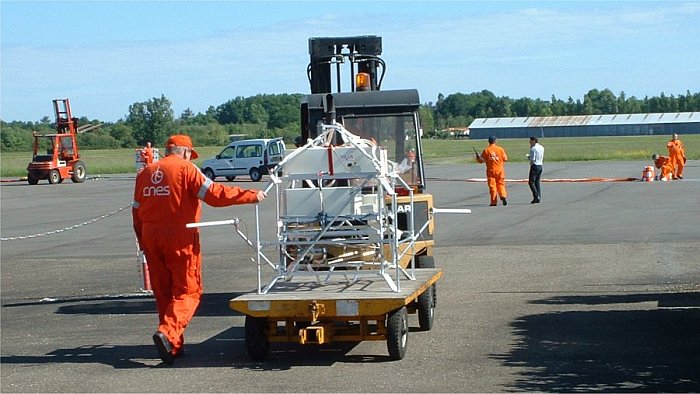Purpose of the flight and payload description
The µSDLA (Micro Spectrometric Diode Laser) developed by the Service d'Aéronomie of the Centre National de Recherche Scientifique from France, was a diode laser spectrometer devoted to the in-situ measurement of H2O and CH4 in the UTLS (upper troposphere low stratosphere) by infrared absorption spectroscopy. The instrument was a smaller, lighter and easier to launch version of the SDLA-LAMA instrument also developed by the same group.
It was composed by three near-infrared telecommunication-type InGaAs laser diodes which were connected by means of optical fibers to an open multipath optical cell providing an absorption path-length of 28 m. The laser beam was absorbed by ambient gas molecules as it was bouncing back and forth between the cell mirrors. CH4 was monitored at 1.65 µm and H2O at 1.39 µm using the differential detection technique. The payload also included pressure and temperature sensors. To avoid contamination by out-gassing from the balloon or the payload, only data recorded during the slow night-time descent of the balloons were considered, continued by those during parachute descent in the lower troposphere.
Details of the balloon flight
Balloon launched on: 5/15/2002 at 9:37 utc
Launch site: Centre de Lancement de Ballons CLBA, Aire Sur L'Adour, Landes, France
Balloon launched by: Centre National d'Etudes Spatiales (CNES)
Balloon manufacturer/size/composition: Zero Pressure Balloon model 35SF Zodiac - 35.000 m3
Balloon serial number: 35SF Nº 114
End of flight (L for landing time, W for last contact, otherwise termination time): 5/15/2002 at ~ 10:00 utc
Balloon flight duration (F: time at float only, otherwise total flight time in d:days / h:hours or m:minutes - ): 33 m
Payload weight: 340 kgs
Gondola weight: 92 kgs
This was the first technological flight of the instrument. It was carried out from the CNES balloon launch base of Aire Sur L'Adour on May 15, 2002. The mission was launched using the auxiliary balloon method at 9:37 utc. Initial ascent went smooth but after a few minutes of flight the mission was aborted due to a helium leak on the main balloon. The maximum altitude reached was approximately 2000 m. Upon landing, the balloon envelope crashed into some trees, but the gondola was intact, ready for another flight which was carried out in May 24 at the same base.
External references
- Micro-SDLA website Institut national des sciences de l'Univers - CNRS
166If you consider this website interesting or useful, you can help me to keep it up and running with a small donation to cover the operational costs. Just the equivalent of the price of a cup of coffee helps a lot.




